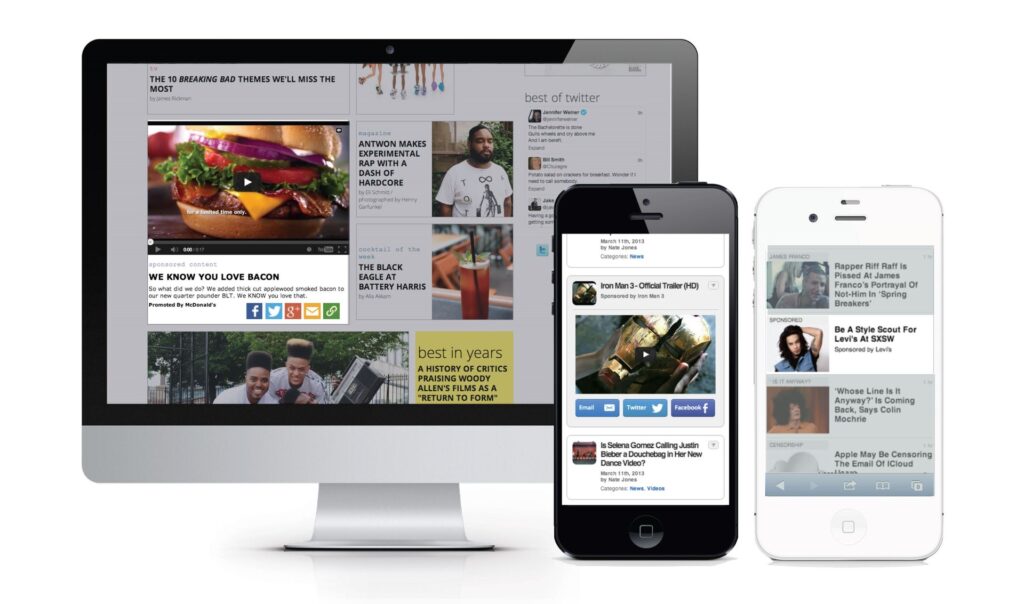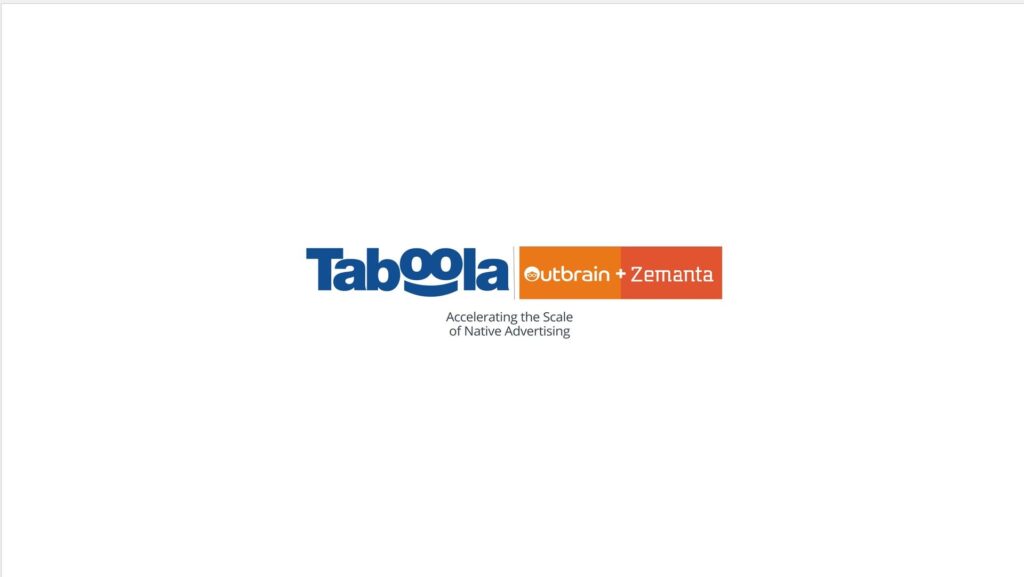NATIVE ADS: HOW DO THEY WORK?

What is Native Advertising? Native advertising refers to the strategy of designing advertisements that blend seamlessly with the content, design, and behavior of the platform they’re on, creating a sense that the ad is a natural part of the platform. Examples of this approach include promoted search results and sponsored social media posts, which offer the same value to users as organic search results and user-generated posts. As traditional advertising methods like display and banner ads become less effective, both established brands and new startups are investing more in content marketing and non-intrusive ad formats. By 2025, it’s projected that the global market for native ads will generate over $402B in annual revenue. How Native Ads function? Native ads function through a supply-demand mechanism. Publishers, who have an audience and reach, aim to monetize their sites, representing the supply side. Advertisers, on the other hand, represent the demand side, seeking to reach an audience and achieve goals related to awareness, sales, or lead generation. When a user visits a website with ad space, a bid request is sent from the publisher’s supply-side platform (SSP) to a demand-side platform (DSP), which returns an advertiser’s bid and metadata metrics. The advertiser with the highest bid gets their ad displayed to the user. How to identify Native Ads? Native ads are placed in a context where they fit naturally and are relevant, often looking like the other content around them. They may not always include typical advertising language, especially when the goal is brand awareness. Native advertising can be run manually or programmatically across various channels, including search engines like Google and Yahoo, social networks like Facebook and Instagram, and content discovery platforms like Taboola. Everyone benefits from Native Ads? Native advertising benefits advertisers, publishers, and users alike. Advertisers, from Fortune 500 companies to startups, use native ads to reach audiences at impactful moments, maximizing ad spend and driving goals from brand awareness to leads and sales. Publishers use native ads as a crucial tool for monetizing content across platforms and devices without sacrificing user experience. Users benefit from native ads as they are less disruptive than pop-up or pre-roll ads, allowing them to engage with branded content they may be interested in on their own terms. Which is the right Native DSP Platform? Choosing the right native advertising platform can maximize the return on a native advertising initiative. Many publishers and advertisers partner with technology companies that can assist with content distribution, audience engagement, cross-platform monetization, and more. Content discovery platforms like Taboola, Outbrain and Zemanta have become particularly popular, reaching billions of users each month and using predictive algorithms to match each online user with the content they’re most likely to be interested in next. Different native ad placement have different benefit The performance of each ad unit varies depending on factors like page placement, audience referral source, and desired post-click behavior. Some formats perform well for both publishers and advertisers, generating a high number of impressions and conversions. For instance, prominent homepage placements are impactful for brand awareness and thought leadership campaigns, while mid-article units are especially powerful on mobile, engaging users’ curiosity before they leave the site or return to their social feed. Below-article placements are recommended for performance advertisers, reaching audiences at a valuable moment when they’ve just finished consuming content and are open to discovering something new. Native Ads potential is huge for your brand In conclusion, native ads offer significant potential benefits for advertisers, publishers, and users. Advertisers can reach audiences at highly impactful moments, publishers can monetize their sites without sacrificing user experience, and users can avoid disruptive ads and engage with branded content they might like on their own terms.
Effective Strategies for Launching a Native Ads Campaign

For marketers aiming for performance, the most daunting task is ensuring their marketing materials stand out. With the online world being flooded with new messages daily, it’s crucial to ensure your message not only stands out but also reaches the most relevant audience. Utilizing Native DSP ad platforms to promote your business offers a chance to stand out and connect with new customers who engage and respond to your brand message or business. Native DSP recommendation engines are present on 80-90% of premium publishers’ sites, offering high visibility and credibility. It also allows access to over a decade’s worth of data on what over millions of anonymous users find interesting, and what conditions prompt someone to click on a recommendation to take action and learn more. As you embark on your journey in the world of discovery, here are some best practices to follow when starting a new discovery campaign: 1. Clearly define your campaign goals Before starting your campaign, it’s crucial to define your goals. Whether it’s generating leads, selling products, promoting app downloads, or raising brand awareness, your Key Performance Indicators (KPIs) should be clear and measurable. Align your campaign goals with your business goals and use Native DSP’s multiple-conversions pixel to measure your success. 2. Select marketing assets that align with your goals When choosing your assets, focus on generating specific actions from your targeted audience rather than just driving traffic. Your message should be concise and get to the point quickly. Ensure your landing page promotes a single message and action, and that your headline, subheadline, images, and design all represent this message. Include a clear call to action in different sections of your landing page. 3. Use effective headlines and images Your headlines and images are key to your Click-Through Rate (CTR). Avoid negative keywords like “never” or “worst” in your ads. Mention your targeted audience in your headline and use close-up pictures rather than vague images. 4. Target your audience effectively Successful marketing campaigns target the right audience with the right message, in the right place, at the right time. Outbrain’s advanced targeting methods enable you to set all these factors. Consider which device and location you want to meet your audience and ensure your marketing assets meet your targeted audience’s mindset. 5. Structure your campaign effectively Each marketing platform has its own unique campaign structure. Separate mobile and desktop campaigns due to different CPCs and user experiences. Start your campaign with at least 10 headline and image variations to see which ads perform the best. Consider your bids and whether to start low or high. 6. Implement pixel at the very start Even if your campaign isn’t ready yet, it’s a good idea to open an account, copy the pixel, and implement it on your marketing assets. This allows you to start acquiring audience data for your lists. In conclusion, you’re now ready to start your new discovery campaign. Remember to optimize for CTR in the first few days of your campaign. Once your campaign has been running for a few weeks and you have sufficient data, you can start optimizing towards conversions. It’s recommended to run a discovery campaign for at least 30 days to get the most out of the product. If you need more assistance, you can always consult our team of programmatic specialist at Admakx Digital Inc.
Why do we run ads on Native DSPs?

At Admakx Digital, we are on a mission to use technologies that connect with consumers at the moments when they are most engaged. We leverage the power of Native ads through Native DSPs allowing marketers to reach audiences at highly impactful moments when they are most receptive to new discoveries, aligning with their content consumption habits and patterns. We’ve seen great success with our clients across the globe and here’s why global brands are adding Native DSPs in your media plans. Diversified Media Cost: Spreading your bids across multiple DSPs along with Native DSPs not only increases your chances of winning the auction but also ensures a sustainable long-term strategy. Performance-Driven CPC Model: Native DSPs are designed to maximize engagement and performance. Their Cost Per Click (CPC) pricing model ensures you only pay for genuinely interested users, focusing on delivering outcomes and attracting intent-driven consumers. Streamlined Supply Path: Unlike traditional DSPs, Native DSPs source ad placements directly from the publisher’s website, acting as both SSP and DSP. This eliminates intermediaries, maximizing ROI for advertisers and improving monetization for publishers. Exclusive Inventory: Native DSPs provide access to both standard IAB format ad units through programmatic channels and also to their own unique ad unit placements hard coded on publisher webpages. This diversity in ad units, coupled with the ability to capture multiple page placements and audience referral sources, drives high impressions and conversions. This is the reason Native DSPs perform so well for Fortune 500 brands globally.

